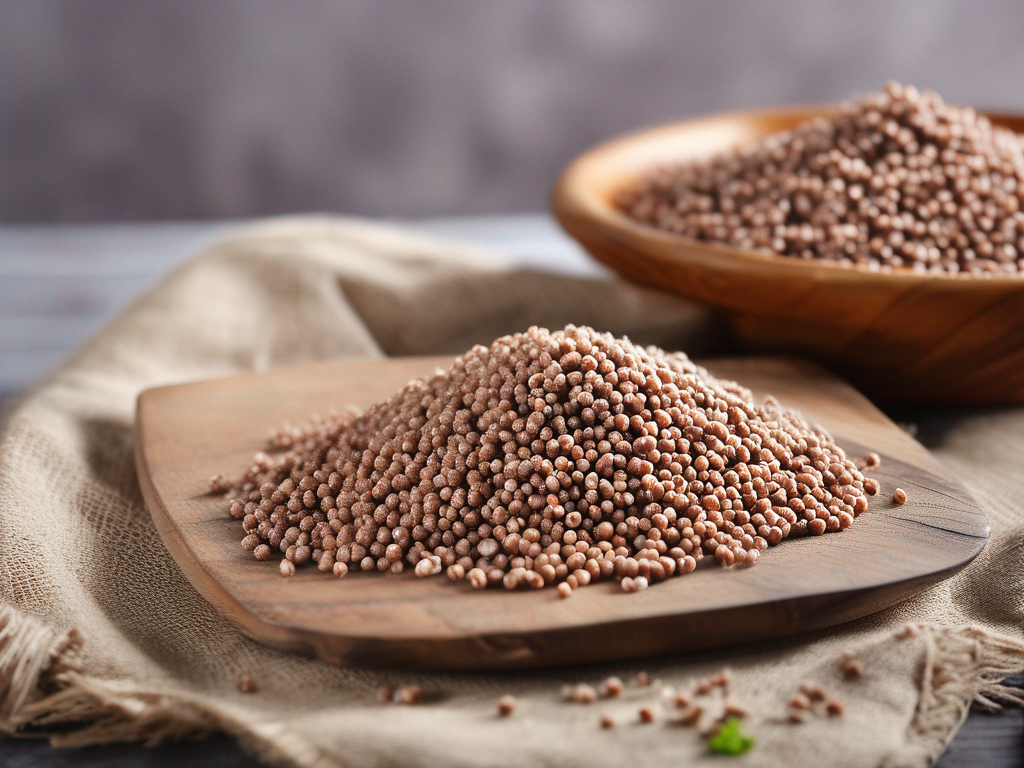
The Ultimate Guide to Common Buckwheat Storage Tips
Get Your Free Food Safety Cheat Sheet
30 most common foods with instant answers. Print it and stick it on your fridge—completely free!
The Ultimate Guide to Common Buckwheat Storage Tips
When it comes to storing common buckwheat, proper handling and storage are crucial to prevent mold and spoilage. Common buckwheat, also known as "kasha," is a versatile and nutritious whole grain that is a staple in many cuisines. In this comprehensive guide, we will explore the best practices for storing common buckwheat to ensure its quality and safety. (Common buckwheat)
Why Proper Storage Matters
Proper storage of common buckwheat is essential for maintaining its freshness, flavor, and nutritional value. Improper storage can lead to mold growth, insect infestation, or rancidity, rendering the buckwheat unfit for consumption. By following the right storage practices, you can extend the shelf life of common buckwheat and enjoy its benefits for longer.
Factors That Affect Common Buckwheat Storage
Several factors can impact the storage of common buckwheat, including:
- Temperature: Common buckwheat should be stored in a cool, dry place away from heat sources and sunlight.
- Humidity: Excessive moisture can cause common buckwheat to spoil quickly, so it is essential to keep it dry.
- Air Exposure: Exposure to air can lead to oxidation and rancidity, so storing buckwheat in airtight containers is recommended.
- Light: Light can cause common buckwheat to deteriorate faster, so it is best to store it in a dark place.
Best Practices for Common Buckwheat Storage
To ensure the longevity and quality of your common buckwheat, follow these storage tips:
1. Choose the Right Container
- Use airtight containers such as glass jars or plastic containers with tight-fitting lids to keep moisture and air out.
- Avoid storing common buckwheat in its original packaging, as it may not provide adequate protection.
2. Store in a Cool, Dry Place
- Keep common buckwheat in a cool, dry pantry or cupboard away from direct sunlight and heat sources.
- Avoid storing it near the stove, oven, or other appliances that generate heat.
3. Check for Signs of Spoilage
- Regularly inspect your common buckwheat for any signs of mold, discoloration, unusual odors, or insect infestation.
- If you notice any of these signs, discard the buckwheat immediately.
4. Consider Refrigeration or Freezing
- If you live in a hot and humid climate, or if you plan to store common buckwheat for an extended period, consider refrigerating or freezing it.
- Place the buckwheat in a sealed bag or container before refrigerating or freezing to prevent moisture absorption.
5. Rotate Stock Regularly
- To ensure that your common buckwheat stays fresh, practice first-in, first-out (FIFO) rotation.
- Use older batches of buckwheat before newer ones to prevent them from sitting in storage for too long.
Conclusion
Proper storage is key to preserving the quality and freshness of common buckwheat. By following the tips outlined in this guide, you can ensure that your buckwheat remains safe for consumption and retains its nutritional value. Remember to store common buckwheat in airtight containers in a cool, dry place, and check for any signs of spoilage regularly. With the right storage practices, you can enjoy the benefits of common buckwheat in your meals for months to come. (Common buckwheat)
Authoritative Food Safety References
These agencies and university labs inform every tip and health precaution we publish.
USDA FoodKeeper – Cold Storage Guidelines
Official refrigerator, freezer, and pantry timelines maintained by the U.S. Department of Agriculture.
Visit USDA FoodKeeperFDA Produce Safety Rule & Grower Guidance
Field-to-fridge handling practices that prevent contamination of fruits, vegetables, and leafy greens.
Visit FDA Produce SafetyCDC Foodborne Illness Prevention Hub
Surveillance-backed guidance on pathogens, symptoms, and steps to reduce foodborne illness risk.
Visit CDC Food SafetyUC Davis Postharvest Technology Center
University research detailing optimal storage atmospheres for produce after harvest.
Visit UC Davis PostharvestPenn State Extension – Home Food Preservation & Safety
Peer-reviewed extension bulletins on safe canning, chilling, and reheating practices.
Visit Penn State ExtensionGet Your Free Food Safety Cheat Sheet
30 most common foods with instant answers. Print it and stick it on your fridge—completely free! Want more? Upgrade to the complete guide with 70+ foods.
Scan your food directly and get instant safety info using our AI-powered camera feature.